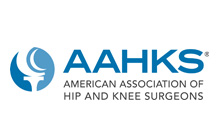Exercising With Knee Pain: Do's and Don'ts
Plenty of studies show the enormous benefits of regular exercise on knee health and the protective advantages it can offer in keeping the structures, tissues and ligaments of the knee protected from damage now, and later in life. As long as you clear it with your physician first, you might be surprised at the knee pain relief and active lifestyle benefits that can come with introducing exercise into your daily routine.
Steroid injections may provide longer lasting benefits for hip pain than current best care
Steroid injections appear to lead to significantly greater pain relief and movement for up to four months than current best care in adults with hip osteoarthritis, finds a trial published by the BMJ today.
How long should a concussed athlete be sidelined?
What factors predict recovery time for an athlete who has suffered a concussion? A new study has some answers. As the Stanford University authors wrote, “Prognosticating recovery times for individual athletes with a concussion remains a challenge for health care providers. Several preinjury and postinjury factors have been proposed to be predictive of prolonged return-to-play times, but the data in this area are still sparse.”
Henry Ford Study Shows Non-Opioids Provide Effective Pain Relief After Knee Surgery
A study by Henry Ford Health System published in the October issue of The American Journal of Sports Medicine provides a promising answer to the question “Can patients effectively manage their pain after ACL knee reconstruction surgery without opioids?”
How Soon Is Too Soon for Revision THA to Treat Instability?
Dr. Nathanael Heckmann and Dr. Craig Della Valle answer ICJR’s questions about their study that investigated whether the amount of time between the index total hip arthroplasty and a revision procedure for instability is associated with an increased risk of complications.
Use of Robotic-Assisted TKA Has Grown Substantially, Study Finds
Although still representing a small percentage of total knee arthroplasty (TKA) procedures performed in the US, nationwide use of a robotic system for TKA grew more than 2000% between 2010 and 2018, according to recent study from Hospital for Special Surgery.
Is Total Shoulder Arthroplasty Appropriate for Patients Under Age 60?
Dr. Paul Cagle and Dr. Brad Parsons answer ICJR’s questions about their study evaluating long-term survivorship in patients with glenohumeral osteoarthritis who were younger than age 60 at the time of total shoulder arthroplasty.
An Overview of Shoulder Blade Pain
Shoulder blade pain doesn't always have an obvious cause. It can be a symptom of something serious like a heart attack or lung cancer. Or maybe you slept on it wrong or have poor posture at the computer.
How does rheumatoid arthritis affect the knees?
Rheumatoid arthritis (RA) is an autoimmune condition, meaning the immune system mistakenly attacks healthy tissues. RA in the knees may severely affect a person’s mobility.
Corticosteroid Injections of the Hip Linked to Rapidly Destructive Hip Disease
Although corticosteroid injections are commonly used to manage pain and inflammation in patients with osteoarthritis of the hip, a new study adds to concerns about the potential harmful effects of these injections.








